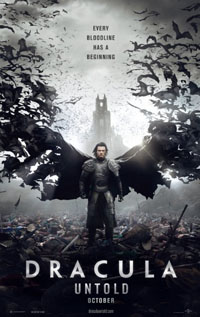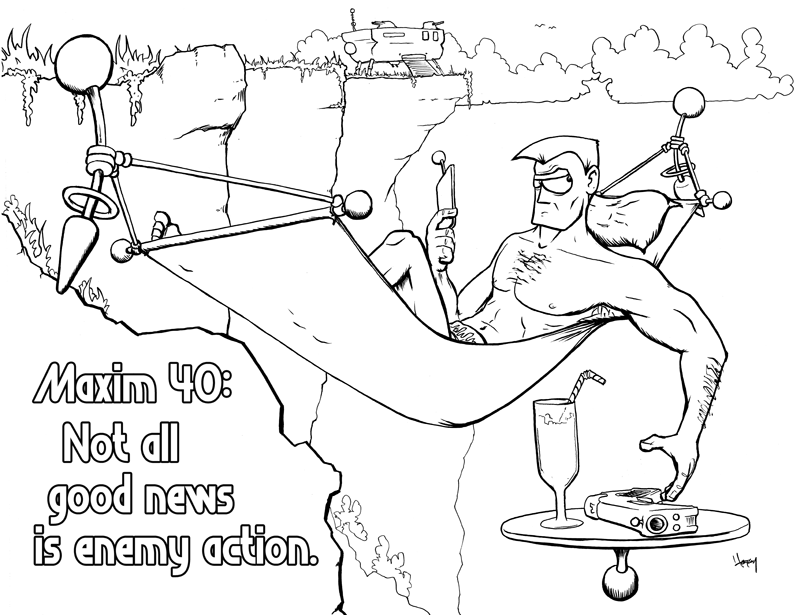I really enjoyed the first two Borderlands titles. I even enjoyed the stories, which is kind of ironic since my introduction to the first game was my friend Brandon telling me how much fun it was in spite of the terribly disappointing story.
I don’t write game reviews, but I’ll try to describe my experience with the latest Borderlands installment, Borderlands: The Pre-Sequel, in meaningful ways.
Game Play
Lots of people have complained the BL:tPS felt like more DLC for Borderlands 2. This is an outgrowth of something I actually appreciated: all my game-play reflexes from Borderlands 2 totally fit. That was a big time-saver.
The new stuff here was invigorating. Enumerated:
- Low gravity and butt-slamming! I had to build a new set of twitch reflexes, but once I did it was pretty rewarding.
- Action Points start at Level 2! Oh, thank goodness. One of the worst things about BL1 and BL2 was that your choice of Vault Hunter means very little for the first four levels of game play.
- The Grinder! About 1/3rd of the way through the game there’s a mission from Janey to repair the machine that grinds up weapons to make better (sometimes) weapons. This was fun.
- More Dialog! Your character actually has a voice this time around. You don’t get to choose what to say (this title’s from Gearbox, not Bethesda, let alone Bioware) but you have a personality.
What did I not like?
- Broken maps! In three places the story quest ground to a halt while I looked for the path to something critical. The low-grav jumping had me thinking I was in a platformer, but no, I was lost because the entire path required me to walk off the edge of the map. (Note: In Borderlands 1 & 2 this is reserved for Easter Eggs and Instant Death.)
- Loooong quests. “Artificial Persuasion” in particular had several points of re-direction (“that didn’t work, let’s try this… on the other side of the map!”) and felt like it should have been staged as four different quests.
- Platforming? Not quite. All the jumping around makes you think you can scale some things, but no, this game is still kind of 2-dimensional. Not everything can be jumped on — even things that are within jumping distance. It’s frustrating to fall through things, or bounce off of invisible walls while trying to get from point A to point M without trudging past points B through L.
- No difficulty setting. This is a real turn-off for me, especially in a game where the story has finally gotten really interesting, because it means I need to grind and grind and grind in order to be tough enough to slop my way through a fight that you super-twitch kids will blast through on raw skill.
Story
Gearbox delivered a pretty amazing story. I won’t spoil anything for you, but here’s some background: Borderlands: The Pre-Sequel takes place about four years after the events of Borderlands, and about one year BEFORE the events of Borderlands 2. (It’s prequel AND a sequel, and they doubled down on giving it a goofy name.)
The four playable characters are people we’ve all met in the previous games, and two of them were NPCs we had to beat during boss-fights. The story-driving NPC, Jack, is the main villain in Borderlands 2, and is probably my favorite “I hate this guy” character in any story or game.
How, then, would the writers build a game with a satisfying story if half the playable characters and their boss turn out to be monsters?
Answer: Wow.
Better answer: If George Lucas had played these games prior to writing the Star Wars prequels, we’d have had much better movies to chronicle the fall of Anakin Skywalker and the rise of Darth Vader.
I’m impressed. Everybody in the story–EVERYBODY–acted from logical internal motivations, and responded rationally to external pressures. NOBODY did things because of plot-pressure. And the end was, at least for me, very satisfying.
If you plan to play, but haven’t finished yet, be sure to sit through the credits after you beat [REDACTED]. There’s sequential art running alongside the the scrolling list of names, and that art will complete the stories of Athena, Nisha, Wilhelm, and CL4P-TP.
$60 is a lot to spend on a game, but according to Steam, I’ve logged 35 hours on it, and my son has logged 30 (using the shared library.) Between the two of us, that’s a dollar an hour for play-time. Granted, I only bought ONE copy… I’m totally going to wait for the sale before buying enough copies for my kids to play with me at the same time.
 I didn’t go see Dracula Untold on opening weekend because the reviews were bad. Maybe my low expectations helped, because it didn’t seem anywhere near as awful as its early reviews suggested.
I didn’t go see Dracula Untold on opening weekend because the reviews were bad. Maybe my low expectations helped, because it didn’t seem anywhere near as awful as its early reviews suggested.
